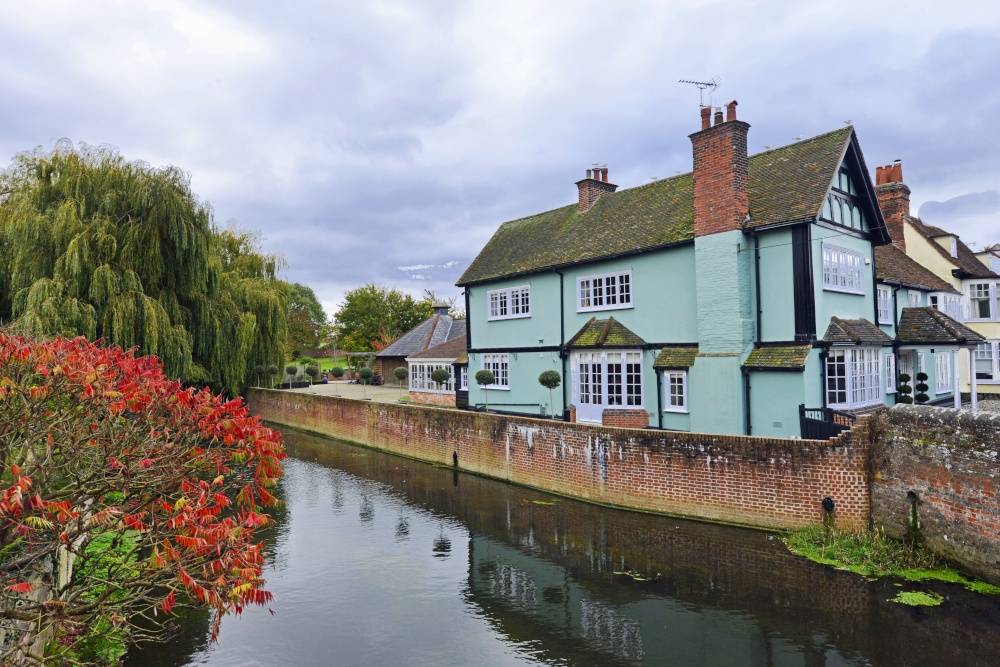Jacob Foster, son of Reginald Foster marries Abigail Lord in 1666. Abigail’s father Robert Lord had arrived in Ipswitch aboard the Tristram and Ann. Unlike so many others of the past, we have a surviving account about Robert that requires recounting. Robert is credited with some 20 years of Indian fighting. It is hard to believe that there were that many Indians left after the small pox and peaceful land purchases. Anyway, it is said that he was so hardy a soldier that he could not lie on a feather bed. And while short and stout, he was also one of the most athletic. During one of the Indian wars it was decided to settle the matter with single combat. Short Robert was selected to do the “Indian hug” with their champion who was said to be seven feet tall. In the David and Goliath battle that ensued, Robert managed to throw the big guy a rod or some 16 feet. The Indian suffered a busted vein and conceded. Robert was thereafter known as the White Devil. Into this colorful family, Jacob married with his second wife. His town job “searcher of coin”, Town Clerk and Clerk of the Court must have been helpful for his Deacon son-in-law who needed to monitor tithing. He left an estate of some $65,000 and was a “useful, upright, and worthy man.”In choosing Abigail as his wife, Jacob was more fortunate than Joseph Wilson who married Abigail’s sister Sarah. Sarah will be tried in Salem for witchcraft in 1692. She failed the “touch test” and brought about uncontrollable twitching when her hands touched a sufferer. She was fortunate to be released after 15 weeks imprisonment. Others were not so lucky.
Robert Lord has an interesting background prior their arrival in Massachusetts. He was born (1602) and baptized in the St. Gregory parish of Sudbury some 20 miles southwest of Ipswich in Essex. The settlement of Sudbury (or South Borough to distinguish it from Norwich or Bury St. Edmonds to the north) dates back to the 8th Century in Anglo-Saxon times. It became a productive textile center in the late middle ages and a significant market town. By the 17th Century, wool weaving and manufacture were becoming less profitable. The borough court established a house of correction for “rogues, vagabonds and sturdy beggars” in 1624. Sudbury, like much of East Anglia, was a hotbed of Puritan sentiment. According to historians. Sudbury was among the town’s called “notorious wasps’ nests of dissent.”[

Robert will wed Mary Waite of Finchingfield in 1630 at the age of 28. Her town and that of her parents lies some 16 miles from Sudbury. Finchingfield appears in the 1086 Domesday book and means “the field of Finc”. It is commonly regarded as one of the most beautiful villages in England. Mary was born in 1612 and thus was around 10 years younger than Robert. Both of her parents had died previously and Robert must have been a catch. Unfortunately, there are few records of her family residence in the cute and worth visiting village.

Robert’s father William was born in Sudbury in 1565 and baptized in nearby Denham. Father William had marries Katherine Bartholomew in 1581 and both are buried in graveyard of their son’s birth. The father of this william, Antony also lived and died in Sudbury. This usually means that there was family stability with the result that reasons for leaving an ancestral homeland must have been compelling. Our Robert arrives in Massachusetts by 1635 shortly after the passing of his father in 1634. We can conclude that as a Puritan it was a good time to leave England with whatever resources his father had left him. And the story gets a bit more complicated. Accompanying the “young” couple is Mother-in-Law Katherine, the 54 year old widow of Robert’s Dad. In 1641, Katherine is listed as being a Ipswich Commoner with the right of using the common land with fellow citizen like Reginald Foster. She is not listed as a widow and her son Robert is not on the list. She passes in nearby Salisbury in 1650. In Ipswich, Robert quickly gains acceptance and and social status.

Robert and Mary will die together in 1683 at Ipswich. She was 71 and he 81. His occupation as a cordwainer or ropemaker provided the family with a comfortable living.
Grandson Joseph Foster was born to Jacob and Abigail in 1680. Unlike his father Jacob, Joseph secured a living as a Cordwainer or rope maker like his grandfather on his mother’s side. In New England with its growing mercantile and fishing fleets, rope makers were an important part of the economy. I assume that Joseph owned some sort of factory as he was the owned one half of a gallery pew in the South Meeting House and left an estate valued in excess of 200 pounds when he died in 1755. Joseph will marry his third wife Sarah Brown of Haverhill in 1714. Son Issac will follow in 1720. He too will marry a Sarah Brown in 1744 with a Issac Jr. born in 1745. The only big change is that Issac Sr. will move the family to nearby Billerica. As Issac Jr. will serve in the 8th Massachusetts Regiment, we will return later to the rest of the Fosters.
